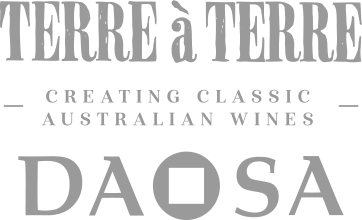The Slow Evolution of the Art of Blending Clarets
Xavier Bizot, 30 June 2023
Introduction
As a Frenchman born in Aÿ-Champagne in the early 1970s and living in this beautiful wine region until well into the mid 1990s, I have more recollection of Bordeaux wines from the 1950s and 1960s popping up on our lunch table than Burgundies or Rhone wines. Pinot Noir would certainly have a prominent place in its bubbly form, less so as a red wine. Was it a case of ancient rivalry between Champagne and its close neighbour Burgundy, was it because Bordeaux wines were better made in the 1950-1970 period than Burgundy – or simply a case of family taste at that time? The answer is probably all of the above.
In the early 1980s, on a cold, snowy winter day I can remember being asked to select a wine from the cellar for Australian visitors. I selected a 1955 Lynch Bages, the visitors were Len Evans and Brian Croser visiting Champagne – the wine was served blind and both of them found the region (Pauillac) and the vintage… Bordeaux was definitely the flavour of the day and all the flying winemakers of the new world were trying to make a great Cabernet, many of them did. As the story went on, more new world Cabernet appeared on our lunch table, including the superb Petaluma Coonawarra 1979 on many occasions.
Burgundies also started making a more regular appearance from the late 1980s. And by the time I was allowed to have a sip of red wine, it was not Bordeaux dominating the conversation– even though they were still allocated the best spots in the cellar. The family tastes evolved as the older members of the family were more inclined towards the gentler tannins of Burgundy. However, Bordeaux still held the first place – Palmer 1961 was never dethroned.
Wine is a journey, and many wine drinkers evolve in their life from one style to another. The older generation of fine wine drinkers/makers who used to cherish Cabernet now revere Pinot Noir and/or Nebbiolo or Grenache and have let Merlot go sideways for more than 20 years. In Australia, Shiraz still holds its reign as a worshipped icon, and is made into “Syrah” by those who view themselves as iconoclasts.
In a similar fashion to Shiraz being made as a Syrah, Cabernet and/or Merlot can be made into “clarets”, i.e. a light-coloured, clear red wine. The term claret encompasses much more than lighter red/purple colour, and refers to a lighter style of red wine, as opposed to the darker heavier styles of Garnachas, Tempranillos or Rhone Syrah (and Australian Shiraz), which were all used by the London trade to boost the colour and palate weight of the light Bordeaux Cabernets (and Burgundy Pinot Noirs) of the XIXth century…
It all becomes very confusing for the wine amateur who is made to think that Pinot Noir is light, Cabernet is heavy! Then it all becomes clear when understanding that the place where the grapes are grown, and their history, is more important than the grape varieties themselves. Cabernet Sauvignon has been grown in warmer places and viticultural techniques have changed, resulting in heavier wines. Similarly, Pinot Noir has been planted in warmer and drier places, producing richer and heavier styles.
The wines on our lunch table in Champagne were not identified by their varieties, but by the place where they were grown and made and the care that the Vigneron put into crafting them. And clarets always were most loved, whether from Bordeaux, North America or Australia – or Burgundy if I may say so.
The following is a brief insight on the history of one style of claret that is purely Australian, the Cabernet Sauvignon and Shiraz blend, that is now misrepresented by the Australian wine consumer as being a heavier style of red wine. I had written this piece on the occasion of the release of our first Crayères Vineyard Cabernet Sauvignon Shiraz, and I have reviewed it as we release our 2021 Cabernet Sauvignon Shiraz and our Reserve 2019.
Cabernet Sauvignon and Shiraz are the most widely planted red grape varieties in Australia, many hectares being planted in cooler regions, with many old vineyards. It deserves to receive more attention as it is known to produce the best examples of wine ever made in Australia.
Part I: The “coupage” in the Medoc in the 18 th and early 19 th century
Until relatively modern times, most French vineyards were co-planted, true field blends. The Bordeaux region of Medoc was no exception, but led the way to rationalise the use of specific grape varieties more suited to their distinctive terroir. Early records of Chateau Latour mention their efforts to replant Cabernet Sauvignon on the best parcels; Malbec on the lesser parcels; and to pull out all other grape varieties. Cabernet Sauvignon was widely considered the best variety for the top Medoc vineyards from the 18 th century onwards.
The art of blending grape varieties to achieve the best possible finished wine is as old as the history of the wine trade. In early 18 th century London, a market for fashionable “new French clarets” emerged. The upper-class English palate preferred Medoc wines when they were coupés (literally meaning ‘cut’) with wines of higher alcohol and colour. The wines of the Medoc were
shipped on lees in barriques to London, where English wine merchants would then age the wines, before blending in a portion of Hermitage (Syrah) or Benicarló (Garnacha Tinta), to suit the English taste.
In response, during the second half of the 18 th century and first half of the 19 th century, the Bordeaux chateaux started to practice the coupage in barrels before shipping, also using Benicarló or Hermitage, especially in the weaker vintages such as 1789 or 1810. The records of the First Growth chateaux such as Laffite and Latour show that even the Grands Crus had to resort to blending in the leaner years. These coupages were requested by the brokers and the négociants, and were considered an improvement by the trade.
However, the great Bordeaux chateaux did not have the same view, and considered coupage as an adulteration of their wines, only to be resorted to in the worst vintages. The practice was widely abandoned by the chateaux in the second half of the 19 th century. Interestingly enough, the phasing out of coupage coincides with the first mentions of Merlot in the Gironde.
It is historically undeniable that Cabernet Shiraz blends not only pre-exist Cabernet Merlot blends; but were in a sense an invention of the trade, as a conduit between maker and market.
Part II: The art of blending Cabernet and Shiraz in 20 th century Australia
While the earliest South Australian vineyards were planted in the Barossa Valley, Clare Valley, and McLaren Vale from the middle of the 19 th century, records of vineyard planting in the Coonawarra region appeared in the late 19th century. John Riddoch, a pastoralists and owner of the Yallum and Katnook station wanted to diversify land use on the South East. On his European travels, he realised that Phylloxera had a devastating effect on the vineyards of France and Spain and also realised the market potential of Claret in London.
Back in South East Australia, he selected 1147 acres of terra rossa land in the Hundred of Comaum to establish the Penola Fruit Colony in 1890. He divided this large parcel into 110 x 10-acre blocks. The buyers (or blockers) had an option to purchase their blocks if they had planted orchards and vineyards. The vineyards were to be planted with 2/3 Shiraz and 1/3 Cabernet Sauvignon.
By the end 1891, 95,000 vines had been planted. 1895 was the first vintage. It was bottled as Coonawarra Vineyards Claret in
1897 in the three gabled winery built in 1891. In 1898, 170 tons of grapes were harvested, with 50 hogsheads being ordered by
the South Australian Government wine and produce depot in London.
The original plantings were roughly 50% Shiraz, 33% Cabernet Sauvignon, and the remainder as Malbec and Pinot Noir. His wine venture was short lived, but his legacy has created arguably the best wines to ever see the light of day in Australia.
Riddoch’s Coonawarra Vineyards Claret was made under his own label, and proved hard to sell. Later the grapes produced from the Riddoch vineyards were sold by Bill Redman to Woodley’s in Adelaide, and the resultant wine was sold overseas. The 1935 Woodley’s Claret won trophies in England and the USA, and the Woodley’s Claret wines from the late 1940s and early 1950s are all legendary; all from Coonawarra fruit, and all blends. It is claimed that in the late 1930s, Woodley’s momentarily stopped buying fruit from Coonawarra, as the Coonawarra wines so outstripped the rest of their wines in quality that they couldn’t sell the rest to their English customers.
The 1950s saw the star of the Coonawarra region rise. The wines were lighter and more elegant than those from the rest of South Australia. Mildara, Penfolds, Yalumba and Lindeman’s all began buying bulk wines from Coonawarra, before eventually investing in vineyards.
Penfolds winemaker Max Schubert started buying bulk wines for his blends in the 1950s, and his admiration for the region continued to grow until he made Penfolds 1962 Bin 60A, often said to be the greatest Australian wine ever made, a blend of Coonawarra Cabernet and Kalimna Shiraz. It is believed that in some years St Henri was almost entirely made with Coonawarra
Cabernet, and that Grange Hermitage has been made with a significant percentage of Coonawarra Cabernet Sauvignon in some great years.
In the 1960s, 1970s, and 1980s many wines in Coonawarra were Cabernet Shiraz blends. It was an agreed classic Australian wine, appreciated because of its elegance.
However, the 1990s heralded plantings of fashionable Merlot in Coonawarra to replace Shiraz in the Cabernet blends, as well as the emergence of a new market of single varietal wines. Coonawarra Cabernet Shiraz blends faded from the limelight.
Part III: The current revival of the Cabernet Shiraz blend in Australia – the release of the
Happily, Cabernet Shiraz blends are firmly back at the top-end of the Australian market today. As our industry leaves behind the insecure desire of the 1980s and 1990s to emulate French or indeed Californian wines, top Australian winemakers have sensibly realised that the Cabernet Shiraz blend is emblematic of the Australian wine industry. Today, Australia is in a sweet spot for the production of world-class fine wines. Decades of observation have led to a deep understanding of different Australian terroirs; the freedom from the constraints of appellation has allowed Australian winemakers to throw out the rulebook and experiment with ‘alternative’ varieties, use of oak, and blending.
In the 21 st century, several producers of the highest echelon fly the flag for the uniquely Australian Cabernet Shiraz blend. Premium examples include wines from Penfolds, Yalumba, Wynns, St Hugo, Hickinbotham Wines and many more.
The Terre a Terre Crayères Vineyard Cabernet Shiraz 2021, and the Crayères Vineyard Reserve 2019, are following that trend, with the unique characteristics of being a blend of grapes grown in one vineyard. The Crayères Vineyard is uniquely Australian with its shallow terra rossa soil over limestone and its topographical similarities with the low altitude and gentle-sloped ridge
(croupes) of the Medoc. Both vintages were exemplary, with close to average temperatures, lower than average rainfall during growing season and mild weather after véraison.
+++++
The Cabernet Shiraz blend has always pleased, for logical reasons. Cabernet Sauvignon provide tannins, aromatics and length to a wine, all enhanced with a sweet core of Shiraz fruit which fills out the middle palate. The blend elevates the separate elements to something higher; as a matter of fact, the top Cabernet Shiraz blends arguably have more finesse and elegance than a lot of Australian Pinot Noirs.
Finally, and importantly, this iconic blend gives Australia a firm standing in the world of Fine Wine. Premium Cabernet Shiraz blends announce the confidence and firm sense of self-identity of a country producing wines well-able to compete with the finest wines in the world.



